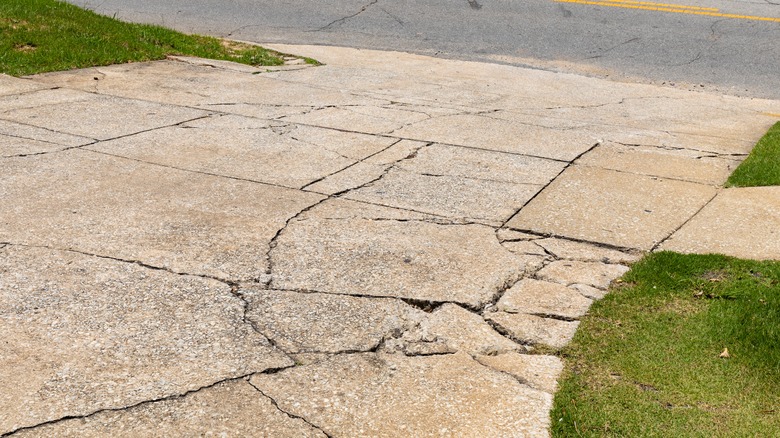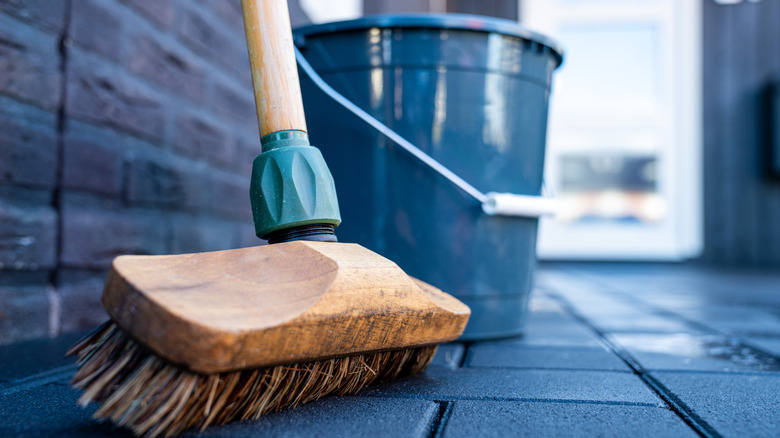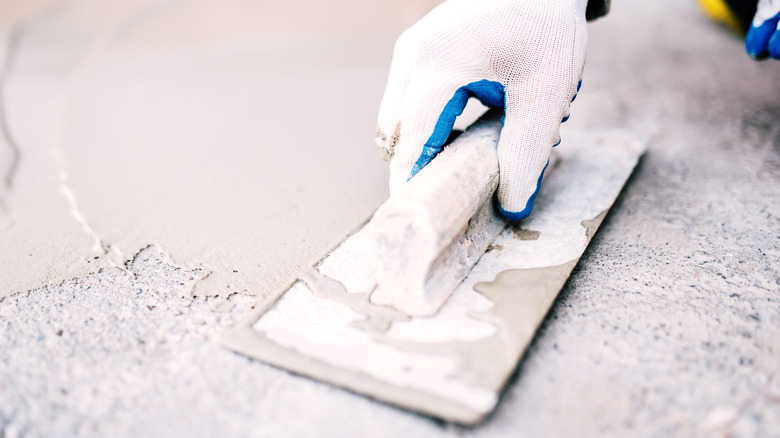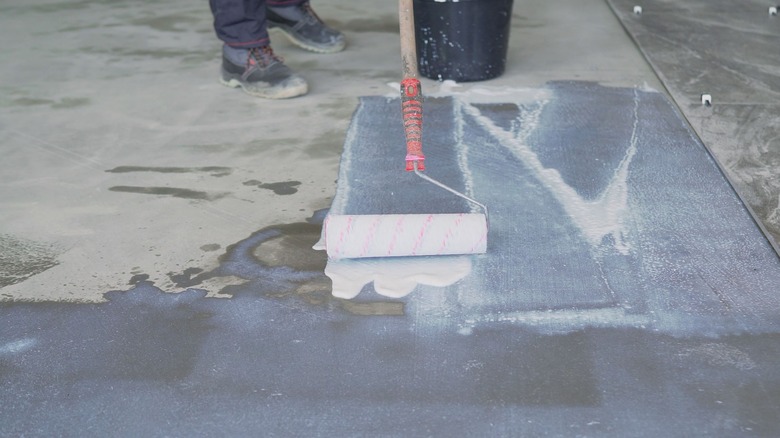An Expert Explains How To Repair Concrete Cracks In Your Driveway
As the winter months recede, you may take a look at your home's exterior and notice deep fissures or cracks developing in your concrete driveway, and perhaps even the sidewalk. You or a neighbor may have even tripped over them, or worse, suffered a fall. What's happening, and is there anything you can do about it? We asked Dylan Forsner, the founder of Milwaukee Mudjacking & Concrete Leveling, and, in an exclusive interview with House Digest, he gives us the answer along with tips on how to take care of the problem. "Driveways made from concrete can suffer damage such as cracks and holes over time, compromising both its safety and aesthetic appeal," he says. "Fortunately, concrete cracks in driveways are relatively easy to fix."
Getting to the bottom of the cause could help you minimize future risks in some cases. Forsner shares, "Concrete cracks can have many causes, but the most common are freeze-thaw cycles, inadequate foundation installation, water damage, ground movement, aging, or wear and tear." Even if you don't know why damage is occurring, doing something about it is often necessary as it can worsen over time if left untreated. "Assessing the severity of the cracks is essential for determining the best repair solution. Consider factors such as size, location, and type of crack (hairline, spiderweb, deep). Smaller and shallower cracks are generally easier to fix than larger and deeper ones." To avoid having to pay to pave a new driveway, consider tackling some of these repairs.
Clean and prepare your driveway
While you can certainly hire a professional, some people may want to fix minor repairs themselves. If you do plan to do the work, you'll first need to take a trip to the home improvement store. "Before repairing concrete cracks, you will need to prepare the following tools and materials: concrete repair compound, concrete cleaner, a stiff-bristled brush, a trowel or putty knife, a bucket, and sandpaper," lists Forsner. "Having these supplies on hand will make the repair process go much more smoothly."
Applying treatment to a dirty surface just increases the risk of the problem reoccurring, so there's preparation to do in order to ensure the best possible outcome and a great finished look. According to Forsner, "The surface of the driveway should be cleaned and cleared of dirt, grime, and other debris." That's where the concrete cleaner and that stiff-bristled brush will come in handy to effectively remove the mess. "Once you are finished cleaning," notes Forsner, "allow the surface to dry completely before proceeding." Doing this helps minimize the risk of water from the cleaning process infiltrating the porous concrete or otherwise altering the outcome.
Apply the repair compound and sand the surface
With the driveway clean, you'll next employ the appropriate products to help restore the concrete's appearance. Be sure to use a concrete repair product designed for your environment and type of concrete. Forsner explains, "After the surface has been cleaned, you can now apply the concrete repair compound to fill in the cracks. Use a trowel or putty knife to carefully smooth out the surface so that it is level with the surrounding concrete. Ensure that the repair compound is completely dry before continuing on to the next step." It's always best to follow the manufacturer's recommendations on using the compound and the length of time it takes to dry properly.
Just patching the damaged areas won't be enough to create a safe surface, so don't stop there. "Carefully sand down the surface of the driveway with sandpaper to make sure it is even and smooth. Take caution when sanding not to damage the concrete around it," explains Forsner. Again, use the recommended sanding materials from the manufacturer to create the desired outcome. If the project is particularly large, consider that you may be able to rent tools from a home improvement center.
Finish the repair
Once the concrete repair compound is set and sanded, protect it from the elements and water that could infiltrate into small gaps. "Finally, apply a concrete sealer... and let it dry completely before using your driveway again. With this repair method, you can keep your driveway looking great while also ensuring its safety," states Forsner. You can follow these steps whenever you notice smaller cracks or damage. Properly sealing your driveway could help prevent bigger problems later as well.
Some situations warrant a different approach, Forsner reveals. "If your driveway has deep and sizable cracks, it may be necessary to enlist professional help for a successful repair." It's also wise to check your city's building codes and property requirements. You may have to make repairs to structures that pose a risk to those walking along your sidewalk, for instance, and there are likely to be rules on how it needs to be done. Often, these bigger projects are best left to the professionals who can ensure it's done to meet city-wide requirements. Done well, these types of repairs can last for years and add value to your home.



